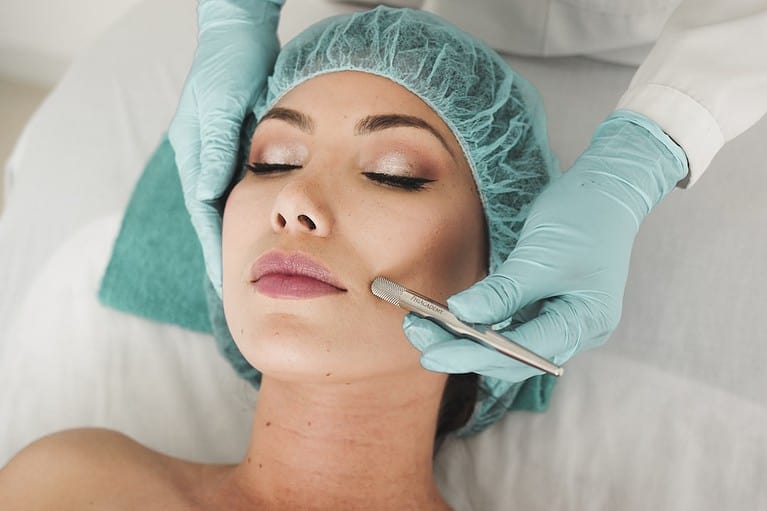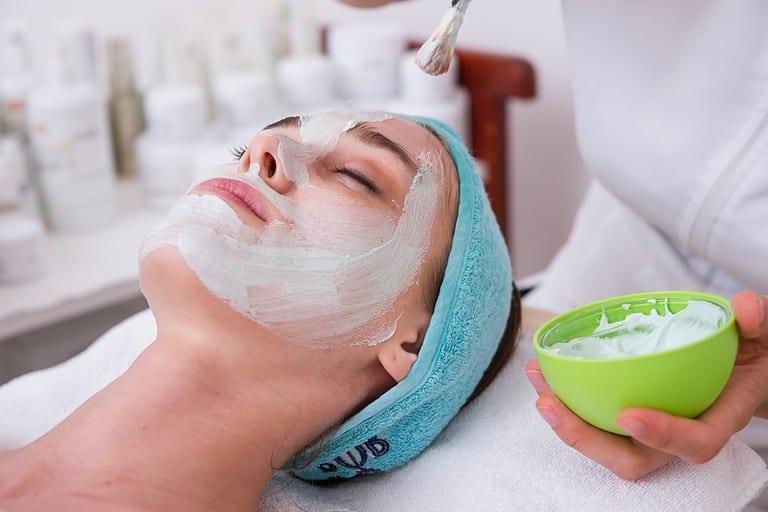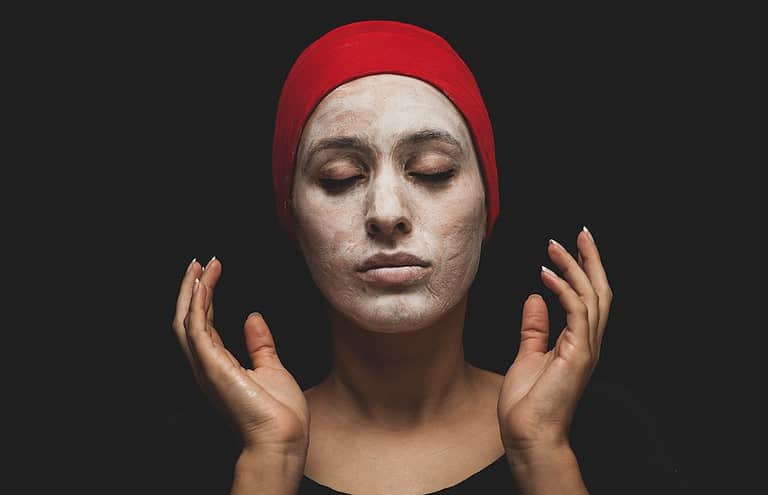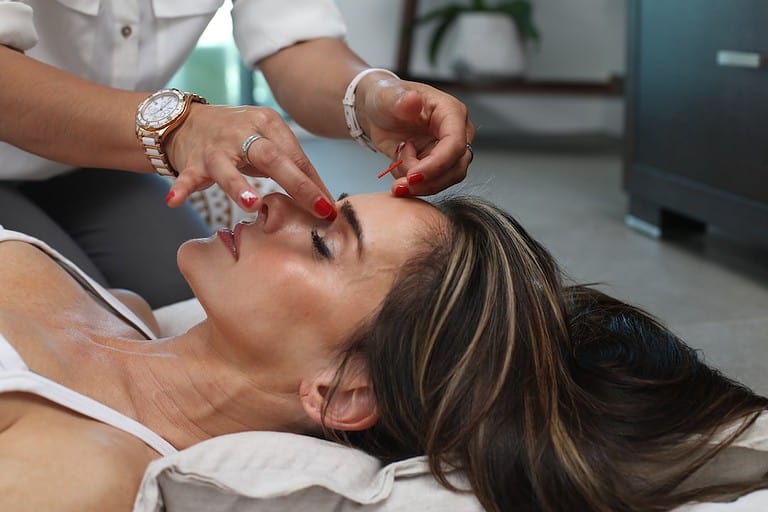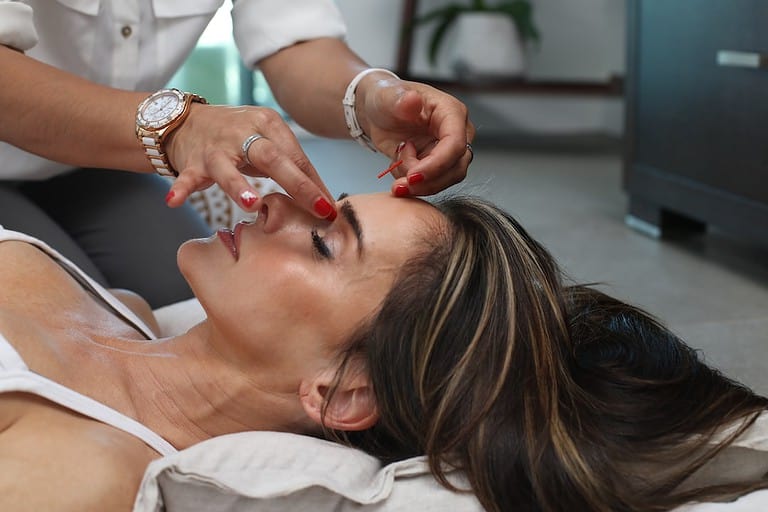What Serums Are Used in HydraFacial: Guide to Your Skin Type
Hydrafacial is a popular facial treatment that many people turn to for improving their skin’s appearance. But did you know that serums play an important role in the effectiveness of hydrafacial treatments? What serums are used in hydrafacial?
In this blog post, we’ll explore what serums are used in hydrafacial and how to choose the right serum for your skin type to maintain the results of your hydrafacial treatment.
So if you’re looking to improve your complexion without harsh chemicals or invasive procedures, learn more about the power of these potent little elixirs!
Table of Contents
What is a Hydrafacial?
Hydrafacial is an advanced skin care treatment that combines the power of hydration, exfoliation, and extraction to cleanse, nourish, and hydrate skin. It uses a patented vortex-fusion delivery system to carry active ingredients into the skin while simultaneously removing dirt, oil, and other impurities. This non-invasive procedure can be used on all skin types with no downtime or discomfort.
How Hydrafacial Works
The hydrafacial process begins with cleansing and exfoliating your face using special serums designed to remove dead cells from the surface of your skin. We’ll discuss later what serums are used in hydrafacial treatments.
Next, gentle suction extracts any clogged pores or blackheads before applying a moisturizing serum that helps hydrate skin and restores moisture balance.
Finally, LED light therapy may be used to reduce inflammation and promote collagen production for smoother-looking skin. The entire process takes about 30 minutes depending on how many areas are being treated at once.
Benefits of Hydrafacial
Hydrafacials offer numerous benefits including improved texture, tone, and clarity as well as reduced wrinkles and fine lines due to increased collagen production. They can also help reduce acne breakouts by unclogging pores — leading to a clearer, more even-looking complexion without any of the irritation or pain associated with chemical peels or microdermabrasion procedures.
Cost of Treatment
The cost of a single hydrafacial treatment will vary depending on where you live, but it typically ranges between $150 to $300 per session. Some spas may offer discounts if multiple sessions are purchased at once. There are also packages offered throughout the year such as holiday specials.
If you cannot afford to pay upfront, look for financing options that will make your hydrafacial experience accessible regardless of budget.
What Serums Are Used in HydraFacial?
Serums are a great way to give your skin an extra boost of hydration, nourishment, and protection. They are highly concentrated formulas that can be used in combination with other skincare products or on their own for maximum results. Serums come in many different forms and target various skin concerns such as brightening, calming, hydrating, restoring, firming, smoothing, and refining.
There are many different types of hydrafacial serums. Some popular options include hyaluronic acid serum, vitamin C serum, peptide serum, glycolic acid serum, retinol serum, and niacinamide serum.
Each type has its own unique benefits that can help improve overall skin health and appearance.
Brightening serums help improve the overall tone of the skin by reducing brown spots, preventing new pigment formation, and reducing fine lines and wrinkles. These serums contain active ingredients like Vitamin C which helps to lighten dark spots while also providing antioxidant protection from environmental damage caused by free radicals.
Calming serums provide relief from redness while replenishing hydration levels within the skin barrier. This type of serum is ideal for those who suffer from sensitive or irritated skin due to its ability to soothe inflammation while protecting against further irritation. It contains ingredients such as aloe vera extract which helps reduce redness while providing anti-inflammatory benefits.
Hydrating serums are formulated with powerful humectants that draw moisture into the deeper layers of the dermis where it is needed most. These types of serums help address signs of aging such as sunspots, dark spots, and hyperpigmentation all while improving overall tone balance.
Restoring and firming serums work best when applied directly after cleansing your face — before moisturizing — because they penetrate deep into pores to reduce fine lines and wrinkles as well as firm up sagging areas. The active ingredients found in these formulations include peptides, collagen, elastin, retinol, and vitamin C.
Smoothing and refining serums accelerate the skin’s surface renewal process, making them perfect for those who want smoother, more even-toned complexions. These types of formulas contain AHAs, BHAs, antioxidants, enzymes, vitamins, and minerals that work together to refine skin texture, minimize dark spots, reduce fine lines, and improve firmness, volume, elasticity, and clarity.

(Source)
How to Choose the Right Serum for Your Skin Type
The first step in choosing the right serum is identifying your skin type and needs.
Do you have dry or oily skin? Are there any areas of concern such as wrinkles, dark spots, or acne? Knowing these details will help narrow down which serums are best suited for your skin condition.
Once you’ve identified your skin type, it’s time to choose ingredients that will target your skin concerns. For example, if you have dry or aging skin, look for products containing hyaluronic acid or peptides which can help hydrate and plump up the appearance of fine lines and wrinkles.
If you suffer from acne-prone skin, then opt for salicylic acid which helps reduce inflammation while clearing away dirt and oil buildup in pores.
Other beneficial ingredients include antioxidants like vitamin C which brighten dull complexions while protecting against environmental damage caused by free radicals.
Maintaining The Results of Your HydraFacial Treatment
To maintain the results of a hydrafacial treatment, it is important to incorporate at-home care products into your daily skincare routine. These products should include moisturizers that are specifically designed for use after a hydrafacial procedure.
You should also have cleansers and toners that will help keep pores clean and clear.
And don’t forget the sunscreen! This should be applied on a daily basis to protect your skin from sun damage and premature aging.
Another important step in maintaining your facial results is to protect your skin from environmental pollutants such as smog or smoke. Wear protective clothing such as hats or scarves to shield your skin from the elements while still allowing you to enjoy outdoor activities.
In addition, applying an antioxidant serum each morning before leaving home will provide another layer of protection against free radicals caused by exposure to UV rays or other environmental factors.
Lastly, scheduling regular follow-up treatments every few months is recommended in order to maintain the results of a hydrafacial treatment. During these sessions, professional aestheticians may suggest adding new ingredients or changing existing ones based on lifestyle habits and current skin conditions to ensure optimal benefits.
Conclusion
Do you want to look and feel your best? Then it’s time to get serious about skincare! Hydrafacial is a revolutionary, non-invasive facial treatment that can help improve the appearance of wrinkles, fine lines, sun damage, and uneven skin tone.
This advanced skincare technology utilizes special serums with potent antioxidants that work together to exfoliate dead skin cells, remove impurities and deliver nourishing hydration for long-lasting results.
The key to a successful treatment is knowing what serums are used in hydrafacial to help nourish and hydrate your skin. With regular use of the right serum, you can maintain healthy-looking skin that looks refreshed and radiant.
Invest in yourself today by trying out this innovative procedure – you won’t regret it!



